As the winter months begin to creep in you don’t want to be caught out in the cold and unprepared. Heating your home may be the last thing on your mind, or if it is on your mind, you may be confused about where to start looking for a heater. There are a number of heaters that you can choose for your home, so we have put together a comprehensive guide on different heating solutions. Read on to find out which type may be the right choice for you.
Types of heaters
If throwing on a ridiculous number of layers in winter sounds like a pain, then you’re in luck! There are six main types of heaters:
- Fan heaters
- Radiant bar heaters
- Convection heaters
- Oil column heaters
- Gas heaters
- Reverse cycle air conditioners
Each of these heaters run on gas or electricity and offer features to suit the budget or preferences of just about any household. Whether you’re in need of a quick fix for warmth or after a longer-term investment, you can choose one of these heaters to fit your needs.
Compare Electricity Plans
Types of heaters
Stuck on which type of heater is best-suited to your household? Understanding how different types of heaters work, as well as their unique advantages and disadvantages is the first step to finding which is right for your needs.
Fan Heaters

Fan heaters operate by fanning heated air (circulated over a heating element) into a room. They are usually comparatively small, portable, and are suited to heating small spaces, rather than a whole home. Fan heaters may be suitable for households on a limited budget, for people looking to heat a small room, or for those looking for a heater that will provide immediate warmth within a smaller space.
Fan heaters are a cheaper option of heater starting at $30 for entry level models and reaching upward of $250 for premium models. DeLonghi Ceramic Fan Heaters are a popular brand of heater costing between $130 and $270. Many of their models can heat medium to large rooms using their powerful fan.
Fan heater pros and cons
| Pros | Cons |
| Quick to heat up
Energy efficient Heat can be oscillated Cool-to-touch housing |
Stop radiating heat as soon as turned off
Not suitable for large spaces Reliant on insulation to keep your living space warm Exposed elements can represent a safety risk |
Radiant bar heaters
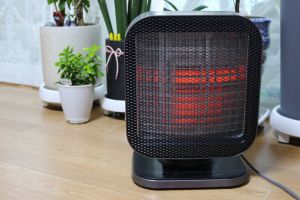
Radiant bar heaters, like fan heaters, fall in the category of electric heaters; and as the name suggests, radiate heat outward using infrared rays, generated by a number of bars built into the heater. This type of heater transfers heat directly to people and objects within proximity, so isn’t the best option to heat an entire room. Like fan heaters, radiant bar heaters are small, portable, and best suited for personal use. They can also provide heating for small spaces like an office or small bedroom.
Radiant heaters are available at a range of budget-friendly prices, starting from $60 and reaching up to $1,000 for heavy-duty models. A popular brand of heater is Goldair’s Radiant Heaters that range in price from $40 to $230. The varied price range means you can find a model that suits any budget or room size.
Radiant heater pros and cons
| Pros | Cons |
| Energy efficient
Quieter than convection heaters Available as freestanding or wall-mounted units Good option for allergy sufferers (no circulating air) |
Only provide targeted heating
Limited temperature control settings Stop radiating heat as soon as turned off Feature exposed heating elements, so not ideal if you have children or pets |
Convection Heaters
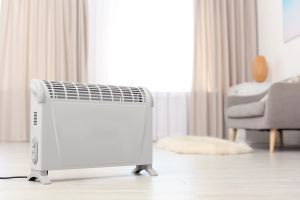
Convection heaters, also known as convector heaters, are electric powered heaters that draw cold air in (convection currents) over a heating element before passing it back into the room. Convection heaters can effectively heat an entire space and are ideal for shared living spaces like living rooms and dining rooms. They operate silently and smaller models don’t take up too much floor space, making them an ideal choice for smaller homes.
Convection heaters come in various shapes and sizes and can be purchased at a range of price points, starting from $50 for smaller units and reaching up to $500. DeLonghi Convection Heaters are a popular choice with prices ranging from $80 to $550, giving you the gift of choice when it comes to size and price.
Convector heater pros and cons
| Pros | Cons |
| Quick to warm up
Suitable to heat an entire room for long periods of time No exposed heating elements Cost less than radiant heaters |
Not as energy efficient as radiant or fan heaters
Can overheat if fan fails or is damaged Can take longer to heat a room if there’s a cold draft Louder than the alternatives |
Oil column heaters
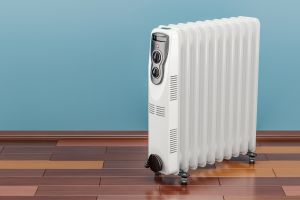
Oil-filled heaters, also known as column heaters (sporting a recognisable column design), produce radiant heat. Once plugged in, oil within the heater is heated and circulated throughout the columns, producing heat. These heaters also produce heat for a period of time after they are switched off making them an efficient heating choice. Oil-filled heaters are electric-powered, are widely available in a variety of shapes and sizes, and like radiant and convector heaters, operate silently.
Column heaters can be found at a range of prices from $100 to $500, however are generally more expensive than radiant and fan heaters. Dimplex’s Oil Column Heaters are a cheaper option with their models ranging from $100 to $200 so you won’t break the bank on heating or compromise quality.
Oil column heater pros and cons
| Pros | Cons |
| Provide long-lasting heat
Can heat larger rooms Available as oil-filled and oil-free radiators Silent operation |
Slower to heat up than other portable heaters
Large in size and heavier than the alternatives Hot to touch Costly to repair |
Gas heaters
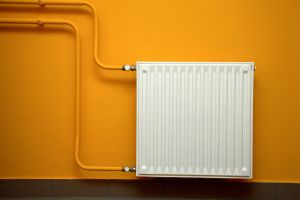
For households with natural gas in their area, a gas heater, providing either convective or radiant heat, may present a viable option. If you don’t have access to natural gas however, LPG heaters are also an option. Gas heaters are either unflued, meaning they can be portable, or flued, which means they are fixed, with a flue pipe venting emissions out of the home. Given that unflued gas heaters emit emissions directly into the home, it is recommended that you research and understand potential side-effects before making a purchase.
Gas heating is a pricier heating option costing between $1,000 and $3,000 depending on the size and model of heater. Rinnai Natural Gas Heaters cost between $1,800 and $2,500, with flued and unflued options available to suit your needs.
Gas heater pros and cons
| Pros | Cons |
| Quick to heat up
Can generate enough heat to warm your entire home More environmentally friendly Can last up to 20 years with regular maintenance |
Cost more than any other type of heater
Require professional installation Potential safety risk in case of a carbon monoxide leak Produce water vapour which can lead to condensation and mould |
Reverse cycle air conditioners
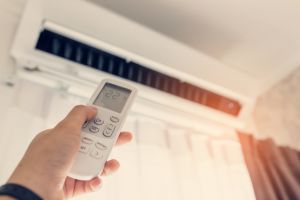
Reverse cycle air conditioners offer the versatility many Australian homes look for year-round. You can choose to use them for heating in winter and for cooling in the summer giving you the best of both worlds in one appliance. Alongside their dual functionality, they are also a more energy efficient option for heating.
While reverse cycle air conditioners are generally more expensive than some of the other options listed, you should keep in mind their potential to deliver long-term electricity cost savings.
Reverse cycle air conditioner pros and cons
| Pros | Cons |
| Dual heat and cool functionality
More energy efficient than portable heaters Can help purify the air Can last up to 20 years with regular maintenance |
Cost more to buy than portable heaters
Require professional installation Doors and windows need to be closed for maximum efficiency Need to be wall-mounted |
Which type of heater is the cheapest to run?
With an extensive list of heaters to choose from, it can be tough to decipher which kind is the most energy efficient heater. As a basis, gas heaters and reverse cycle air conditioners are cheaper to run than other types of heaters. In saying this, appliances that offer longer term savings on energy tend to cost more outright, so weigh up your financial options in the short term and long term before making a decision.
Curious to know how much running your home heater could cost you this winter? Check out Canstar Blue’s latest heating cost analysis for gas heaters, electric heaters and reverse cycle systems.
What to consider before buying a heater
Before making a purchase, it’s crucial to weigh up all heating options as well as other factors, such as:
- Long term vs short term: The old argument of initial cost versus running costs is a big factor to consider when buying a heater. Weigh up how much you may save in the long term to help make the purchasing decision.
- Energy efficiency: No one likes receiving a bill that’s through the roof. Always research the energy efficiency rating and how that may stack up alongside other appliances so you’re not sweating your energy bill.
- The space to be heated: You shouldn’t buy a colossal gas heater for a small one-bedroom apartment, and similarly shouldn’t buy a small portable heater for a multi-bedroom house. Think logically about which rooms need heating and how often you would use the heater in the space to find the best option for your needs.
- Versatility: Can you use the heater for longer than just winter? Could you use it in more than one space? Choosing a heater that serves more than a single purpose can also make the buying decision simpler.
Which type of heater should I buy?
Now that you have the rundown on heater types and know the questions to ask yourself, choosing which type of heater you need should be simpler. With a number of heater models available at different price points, upfront cost shouldn’t cause too much of a headache when deciding, but the longer-term costs may be a major deciding factor. To keep warm all winter long, it’s certainly worthwhile shopping around and speaking to heating experts before making a final decision.
Pictures: AlexLMX/Shuttertock.com, Dmitry Galaganov/Shuttertock.com, Hello_ji/Shuttertock.com, New Africa/Shuttertock.com, AlexLMX/Shuttertock.com, Ripitya/Shuttertock.com, Butsaya/Shuttertock.com.
Original Author: Veronika Hleborodova
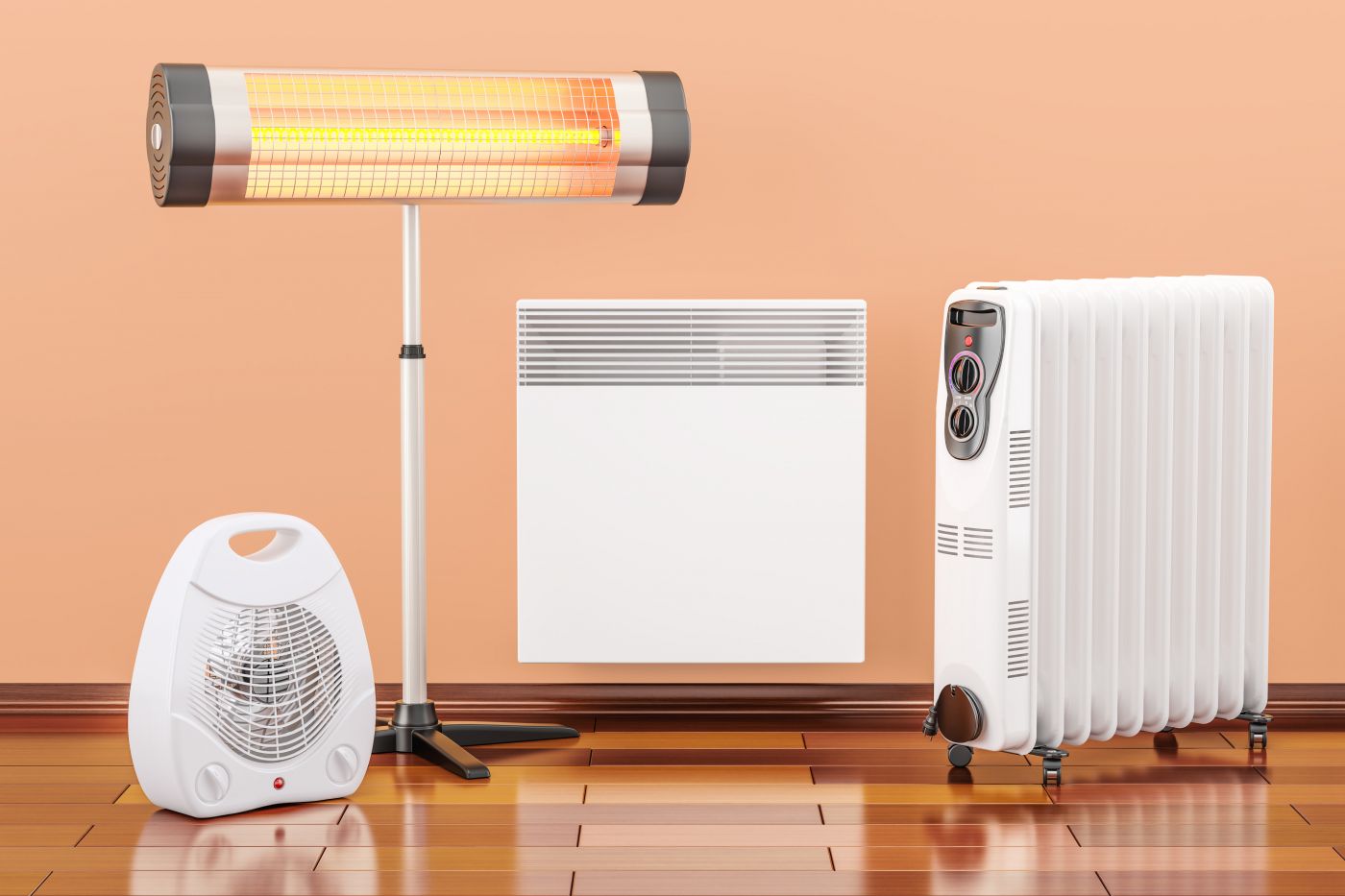

Share this article